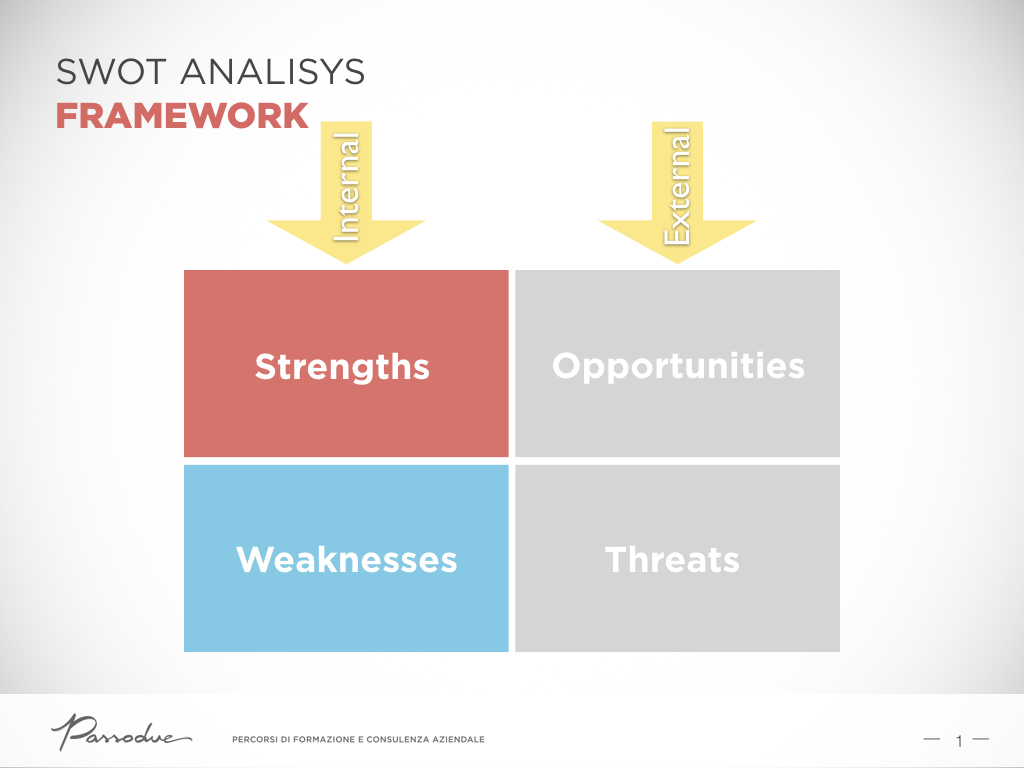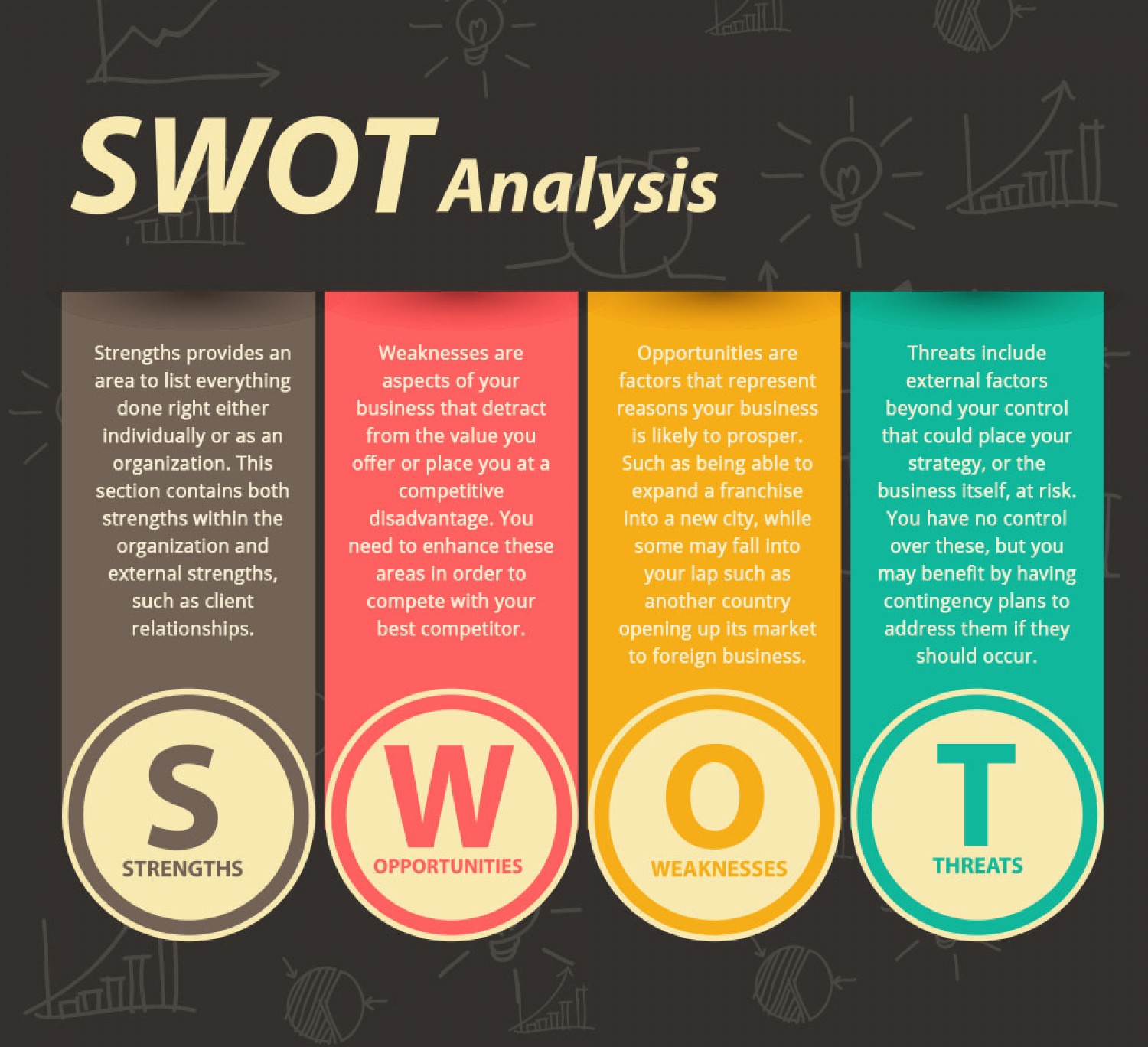Reading time: 4 min
by Alberto Aleo
SWOT stands for Strengths, Weaknesses, Opportunities, and Threats and traditionally identifies a strategic formulation (very fashionable among managers who are ‘in-the-know’) aimed at summarizing the characteristics of the company and the market in which it operates. The definition appears simple, but the subject bewilders many.
– – –
In my opinion, SWOT is not an analytical methodology but only a way of summarizing the results of other surveys.
– – –

To know what our Strengths and Weaknesses are, we must, in fact, perform a thorough internal analysis of our company, while identifying Opportunities and Threats requires a sound investigation of the market. Different methods exist to carry out both these tasks, but SWOT, at least as most companies understand it, is not among them.
– – –
Let’s assume that any serious analysis is based on measurable data and not on subjective opinions and points of view.
– – –
Instead, the usual conception of SWOT is often no more than a meeting in which everyone, in turn, gives their opinion on the market and on the company! We end up with a collection of experiences and personal viewpoints that, while actually being quite interesting, will not be very useful for understanding the reality of the situation. I, therefore, use SWOT as a summary to describe what has emerged using other tools, in particular:
- profiling and analysis of the customer portfolio;
- analysis of the attractiveness of the markets;
- analysis of the company’s offer system;
- benchmarking, i.e. competition analysis;
- analysis of the competitive model and positioning;
- touch-point analysis, i.e. company-market interactions;
- analysis of commercial performance.

Once this has been completed and measurable data obtained, we can then go on to draw conclusions. But what is the point using SWOT analysis (even if based on data) apart from clarifying the overall results of the surveys? Namely, how does it help to know our Strengths, Weaknesses, Opportunities and Threats?
Well, of course, it helps entrepreneurs, general managers and so on, to make strategic choices; but SWOT can also be useful for salespeople if well prepared. First of all, it helps us to select the most valid sales arguments and to avoid the most dangerous ones, but there is more besides because this type of document conceals a secret:
The weaknesses it highlights can, under certain conditions and within certain limits, become sales opportunities!
To explain how it works I will recount an experience I had many years ago. In the summer of 2002, I went on holiday in Puglia by motorbike with friends Fabio and Mario. We set off from Veneto and our whole trip covered almost 1000 kilometres. At the time, I was riding a fashionable vintage-style handmade bike and on my return, I realized that the bike, although practically new, was losing oil and had many loose parts in fact, the tail light almost fell off on several occasions! Can you guess what the dealer’s response was when I complained? ‘This is a classic bike..’, he said ‘it’s normal that it loses oil: it HAS TO lose oil!’ He was emphasizing the true spirit of a handmade bike. Thinking about it, the approach was very similar to that used by our sales manager during my job experience in the sales dept. of a very well known scooter company. When we complained about the high price of our scooters he replied: ‘We are not expensive, we are THE MOST EXPENSIVE because we are the best!’
– – –
In a market that increasingly rewards strong identities and strong characters, the proud claim of a defect can become a central element of our image and our market positioning.
– – –
This happens because the magic word of post-marketing has become ‘truth’ and the catchword of the past, ‘perfection’ is now out. By declaring who we are and how we are, by exposing our flaws without fears or false modesty, we can break the circle of indifference surrounding business relationships and invite our customers to take part in a real consumer experience based on sincerity. However, there is another hidden secret in SWOT – but this time it is dangerous:
Not all the opportunities it highlights are opportunities for growth!
When managers look at SWOTs, they discover attractive markets that are yet to be exploited, products that no-one yet produces, and customers that are yet to be served, as well as many other ‘delicacies’ of this kind. This is how projects for range extension are hastily drawn up and new sales promotions are devised to target an unusual audience or there is a rush towards internationalization.
Obviously, some of these projects may be sound and justified, but remember that ‘unravelling’ your brand image and your organization to tackle perceived market challenges may be overly risky! The ‘cemeteries’ are full of companies that have swapped from helmets to skis, from cars to perfumes or from dresses to cruises.
Remember that consistency is a virtue much appreciated by customers because it goes hand in hand with a recognizable reputation and identity.

Evaluate opportunities not only on the basis of their economic attractiveness but also on the time necessary to pursue them and the real capabilities of your organization. By doing so you are helping your colleagues, yourself and your customers.
| partem claram semper aspice |
The photos used - where not owned by the editorial team or our guests - are purchased on Adobe Stock and IStockPhoto or downloaded from platforms such as UnSplash or Pexels.
Did you like this post and want to learn more about the topics?
Passodue research on issues related to sales, marketing, ethics and the centrality of human beings within the market logic, officially started in 2012. The results derived from our work are described in the publications and in the books you can find in this section.





Hello Passodue
I found the article to be extremely inspiring to the analogy of SWOT. This gave me a clear reading and break-down which I found to be very useful as one of my new tools in management. Thank you for sharing!